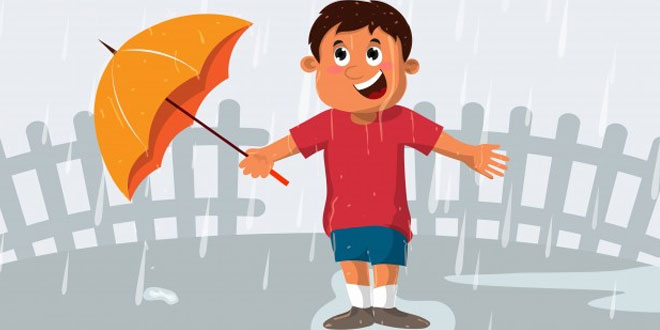Question: Distinguish between absolute humidity and relative humidity. In what units are they expressed?
Answer: Absolute Humidity:
- This is the amount of water vapour present in a unit volume of air, and is expressed in kilograms per cubic meter.
Relative Humidity:
- This is a measure of how dry or moist the air is. It is the ratio of the amount of water vapour in the air to the total amount of water vapour the air can carry at that temperature and pressure. Relative humidity is expressed as a percentage.
Question: How does temperature affect humidity? Explain the two requirements for condensation to take place.
Answer: The amount of water vapour air can hold depends on its temperature. The colder it becomes, the less water the air can hold. The temperature at which the amount of water vapour in the air is at its maximum limit is called the dew point of the air. If the temperature of the air falls below the dew point the water vapour starts condensing.
The requirements for condensation to take place are:
- Condensation is the change of water vapour to liquid (water) or solid (ice) form when warm, moisture laden air comes in contact with a cold surface. Usually, for condensation to take place, the atmosphere must be fully saturated. In other words, the air must be holding the maximum amount of moisture it can at that temperature.
- In addition to the air being saturated, there should be a surface upon which water can condense. This surface might be a blade of grass, a window, or any other cool surface. Condensation usually occurs around small particles of dust in the atmosphere.
Question: What are the different forms of precipitation? Describe each of them in a sentence or two.
Answer: Condensed water falling in any form from the atmosphere to the Earth’s surface is called precipitation.
Precipitation is of different kinds:
- Rain: The most important form of precipitation in rain. Rain takes place when drops of liquid water fall from the clouds to the surface of the Earth.
- Snow: Snow forms when temperatures are so low that water vapour turns directly into ice. This happens as water condenses around an ice crystal. Snow falls to the Earth in the form of snowflakes. If the surface of the Earth is warm it often melts and if cold enough it begins to pile up creating snow drifts.
- Sleet: Sleet refers to a mixture of snow and rain, as well as raindrops that freeze on their way down. Sleet can be very dangerous for people who are driving. It can form a slippery surface over roads that can cause vehicles to skid.
- Hailstones: Hailstones are ice pellets that are too large and heavy for winds to carry and therefore drop to the ground. Ice crystals form high up within cumulus clouds. As they fail towards the Earth, they start melting. Within the cumulus clouds, there are strong updrafts of air that carry these ice crystals back up the cloud. The crystals freeze again and begin to fall towards the Earth’s surface. This process may be repeated several more times, until the hailstones become too large and heavy to be held in the cloud and fall towards the Earth.
Question: Where and how does convectional rainfall take place?
Answer: Convectional rainfall is common in places with equatorial and tropical climates, where intense heating of the Earth’s surface takes place during the day.
- During the course of the day, the air above the land becomes heated making the air less dense, so it rises up.
- As the air rises it cools. Since cool air cannot hold as much water vapour as warm air, condensation occurs.
- Towering thunderstorm clouds (cumulonimbus clouds) are formed.
- When the weight of the water in these clouds becomes more than the cloud can hold, the water comes down as a huge downpour.
Question: Define humidity.
Answer: The amount of water vapour in the atmosphere is called humidity.
Question: What is condensation?
Answer: Condensation is the process in which water vapour in the air changes into water.
Question: Define precipitation.
Answer: Precipitation is the process in which condensed water vapour falls down on the surface of the earth in various forms such as rain, snow, sleet and hail.
 Class Notes NCERT Solutions for CBSE Students
Class Notes NCERT Solutions for CBSE Students



